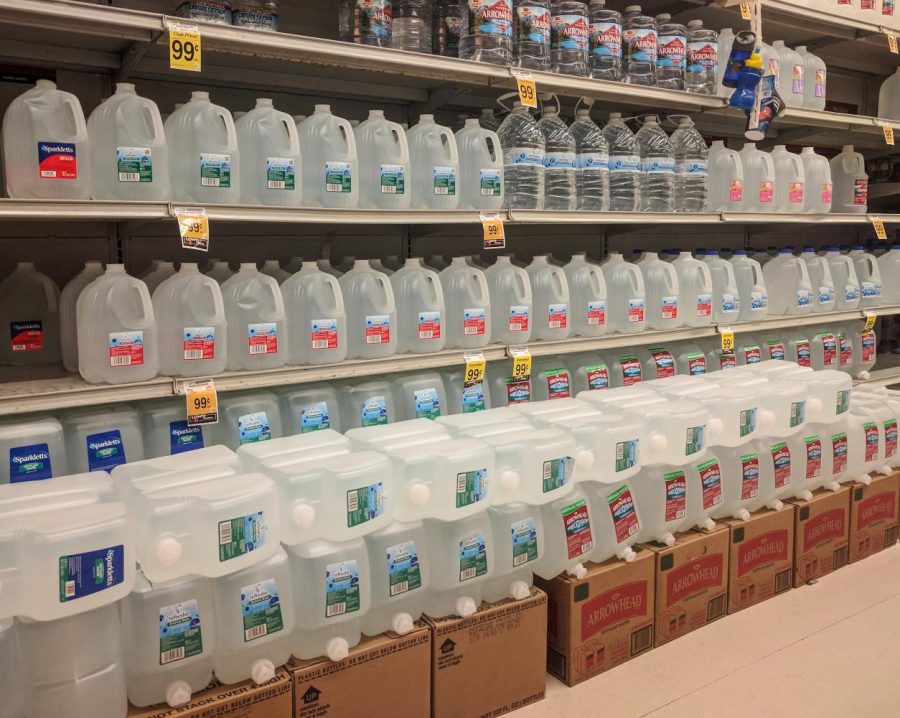Disaster Preparedness 101
Expecting – and preparing for – the unexpected
Basic supplies can easily be stocked ahead of time so your family is prepared for emergencies, Oct. 19.
October 16, 2017
September 2017 in North America was a month filled with natural disasters on a large scale. Major hurricane damage in Houston, Texas, Florida and the Caribbean was followed by several earthquakes in Mexico.
Relief efforts will take months to rebuild and overcome the destruction. Millions of people were affected by these tragic events, and millions of Americans donated to disaster funds. But in the back of our minds, we also know we ought to be better prepared ourselves.
In an email interview, Dr Pat Abbott, SDSU Professor Emeritus of Geological Sciences, said, “If you spend your life in California you will probably experience one significant earthquake. Please prepare your mind for how to react when that day comes.”
In 1989 the San Francisco Bay Area was hit with a 6.9 magnitude earthquake during the baseball World Series. In 1994, the Los Angeles region was devastated by the pre-dawn 6.7 magnitude Northridge earthquake. Considering the last major earthquake was in the mid-1990s, it is easy to forget a major disaster close to home could happen anytime.
News outlets showed long lines of thousands of people trying to stock up on basics before the recent natural disasters, with long lines of thousands of people trying to stock up on basics. Food, bottled water, toilet paper, batteries, and gasoline ran out. Too soon the store shelves were empty and the gas stations shut down.
By taking a few steps now, you can make a simple plan to be as prepared as possible for an emergency.
The American Red Cross and the Centers For Disease Control and Prevention websites suggest at the minimum that families should develop a plan and ensure all members have each other’s contact information. A family member who lives far outside the area should be the designated for everyone to check in with. Three days worth of water, canned and dry food, and necessities like toilet paper, toothbrushes and toothpaste, and first aid supplies should be set aside for each person.
All these items can be stocked from a discount store; there is no need to purchase expensive prepackaged emergency kits.
Copies of important documents like insurance cards, shot records and medical paperwork should be made and set aside, as should extra sets of home and car keys, and phone chargers. Having extra supplies for babies, elders and pet needs should also be planned for. Keeping gas tanks at least one quarter full at all times can help keep a vehicle useful if fuel has to be rationed. Emergency response agencies also strongly suggest checking your designated disaster supplies every three months and changing out any items before they expire.
The Red Cross and CDC websites have detailed instructions and templates to help you create a family plan for emergencies, which should be discussed at length with all family members, including children. Preparing now for the unexpected will help lessen the effect of potential San Diego disasters.










